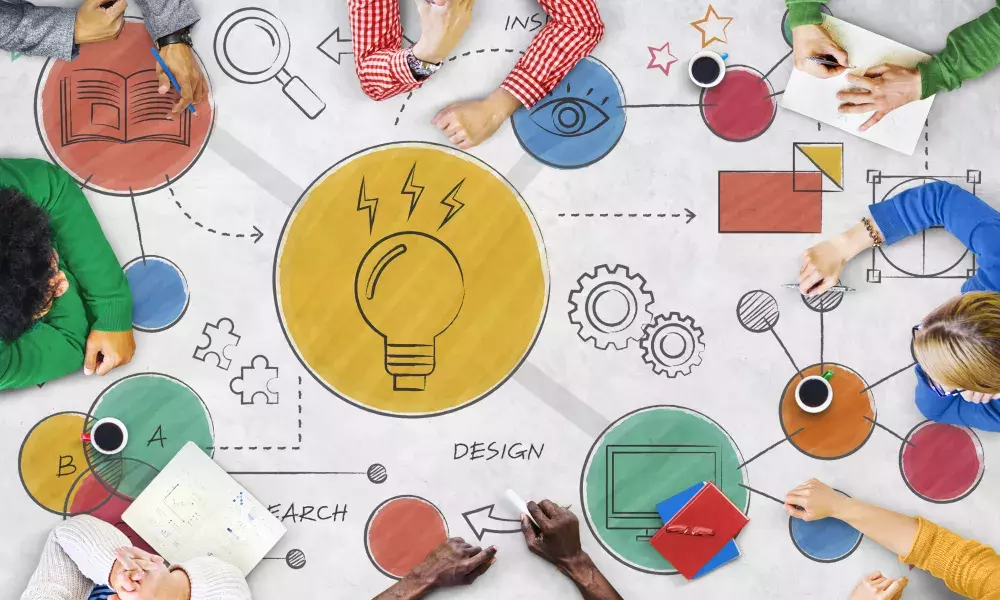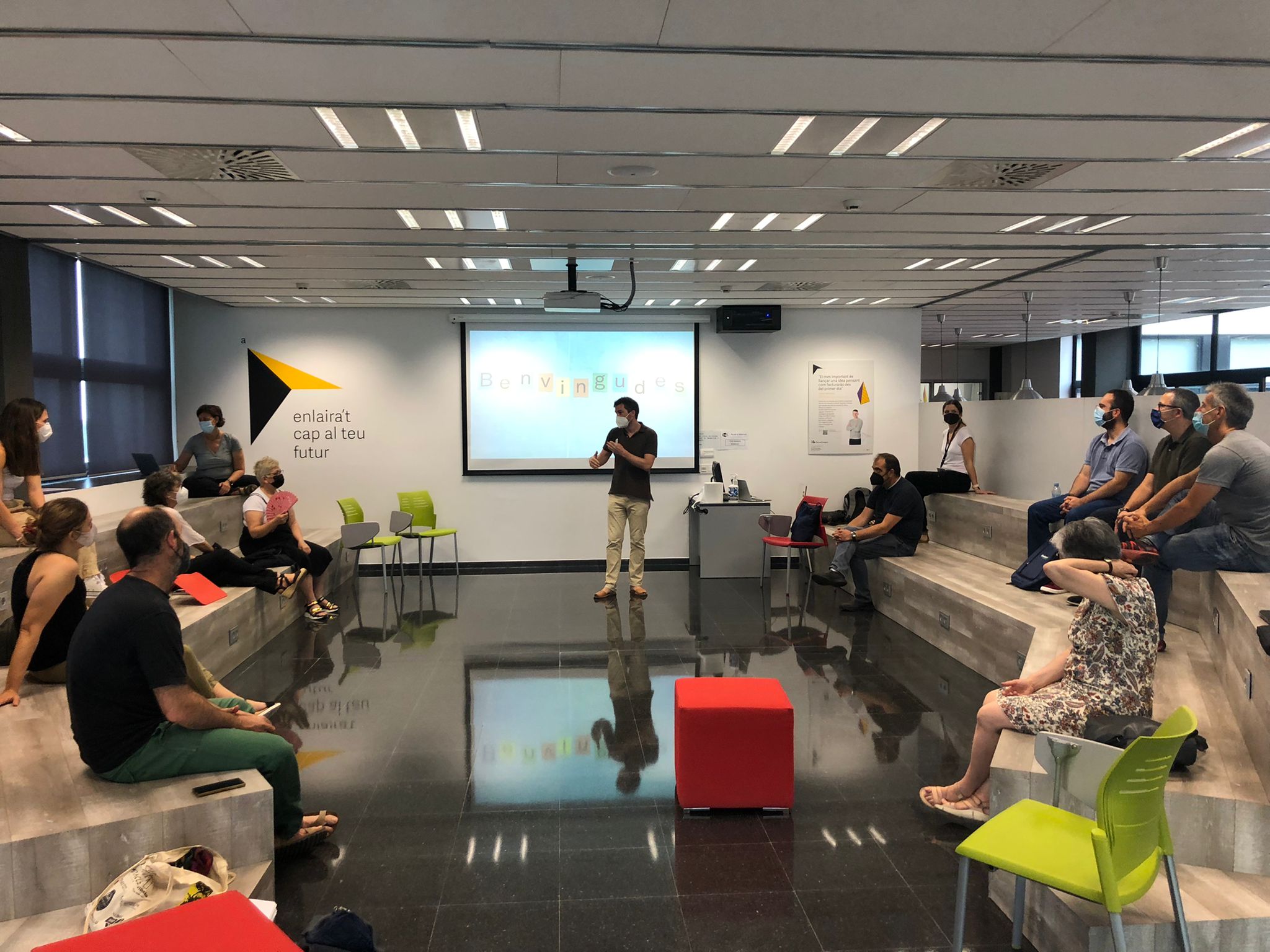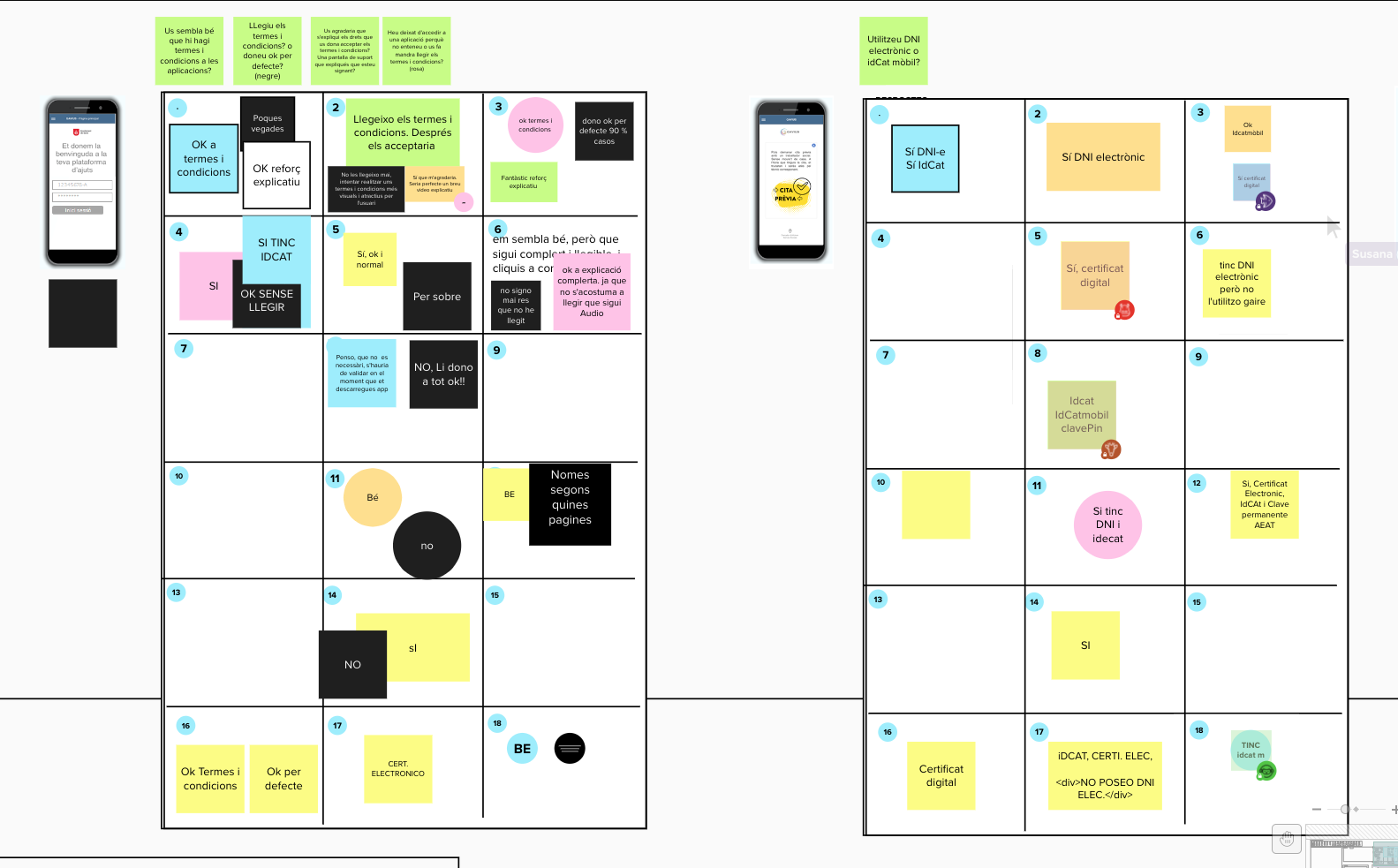Designed with and for the user: GAVIUS employs co-creation to develop its social aid management app

Co-creation in digital public services
The 2009 Benchmark Report “Smarter, Faster, Better eGovernment” by EU Member States[1] has introduced the concept of user-centricity among the elements to be taken into account when assessing digital public services. In the past, the maturity of such services was mostly understood as the technological and organisational complexity of ICT systems and they were evaluated according to the degree of integration of increasingly sophisticated technologies in the public administrations. The report recognises user experience as an essential gauge to the take-up of online services and marked a turning point in their design, development and testing.
Nowadays, co-creation is an established method in the design of digital public services and is considered a prerequisite for successful uptake. Moreover, the role of technology differs substantially from other domains. Whereas in the business domain co-design of digital services is meant to effectively address consumer demands, in the digital public services’ ambit “it aims to co-create (public) value for public administrations and citizens”[2].
Co-creation is a powerful driver of responsible innovation and stands at the backbone of GAVIUS approach. The project intends to apply Artificial Intelligence in social services by adopting privacy by design, preserving human rights and addressing ethical concerns related to algorithms’ potential biases. Thus, one of the utmost priorities of the team is to gather end users’ preferences and effectively engage citizens and all stakeholders involved in social aids’ management through consultation and co-production activities.
Let’s have a closer look at what co-creation stands for in GAVIUS and how it is informing its public services’ innovation approach.
The GAVIUS co-creation approach
In the last quarter of 2020, a first round of co-ideation sessions was held. Since we were in the midst of the COVID-19 pandemic, the sessions focused on qualitative observation and analysis. In 2021, and still under the limitations imposed by the pandemic, the GAVIUS team conducted an in-depth series of co-creation sessions to expand the contribution base by potential users, especially in terms of citizenship participation, and gather opinions.
Along with municipal officials and staff from different departments of the two City Council of Gavà and Mataró (i.e., social services, IT and citizen attention), the co-creation multidisciplinary team included experts from the partners Eurecat and Tecnocampus (session facilitators) as well as Inetum (designers and developers).
Online survey
Prior to the co-creation sessions, online surveys were carried out about citizens and users of the Social Welfare service. The objectives of the surveys were: 1. Collecting quantitative data on the knowledge, use and preferences of users and potential users in relation to social aids; 2. Recruiting volunteer users for co-creation sessions.
The surveys include the same questions in both the municipalities, except for some minor adaptations needed to tailor them to the context of each city. They were conducted through either the Decidim platform or by the Social Welfare staff, who interview users by phone call and then transfer the information onto the platform.
Decidim is a participatory democracy open-source platform, originally developed for the Barcelona City government online participation website and aimed to increase Barcelona citizens’ level of engagement in the political and legislative-making process. Decidim is currently used by several cities, regions, organizations and international institutions. For its technical maturity, user privacy protection, broad community and adaptability, it has been chosen by the European institutions and adapted by adding specific functionalities to support the need of the Conference of the Future.
Co-creation sessions
Accompanied by Eurecat, Tecnocampus and Inetum, both city councils have arranged a series of five fruitful co-creation sessions which have been all held online due to the continued public health restrictions except for the last one.

During the online sessions the GAVIUS team has used professional videoconferencing tools coupled with collaborative work tools and digital blackboards to share graphic materials, collect inputs and enhance participation. The four online sessions held by the two cities follow a shared structure as follows:
Session 1: On-boarding: The challenge of any first co-creation session is to put participants in context and create the right atmosphere to foster participation and a sense of freedom of opinion. It is also crucial that participants understand and adopt the tools for remote collaboration: it is necessary for participants to feel comfortable to speak up and express their opinions, they should clearly see what is being shared on the screen and how things evolve along the co-creation progresses, so as to be able to look at the different proposed options available and make comments and suggestions. Last, they should be able and feel confident to interact with the tool by writing, drawing, moving elements, or else.
Session 2: Exploration – citizens and other beneficiaries. This session was meant to explore the GAVIUS app functionalities and navigation features from the perspective of the users and beneficiary entities. It led to identify main concerns, needs, preferences in navigation flows, access and presentation of information, and types of interfaces.
Session 3: Exploration - staff and managers of the City Council. This session had a similar structure as the previous one, but aimed at City Council staff and managers. It aimed at identifying the main concerns, needs, preferences in browsing flows, access to and visualization of information, types of interfaces, etc. from the perspective of a City Council worker who accesses and uses the information to carry out their task. The navigation focuses on the options and opportunities offered by the tool in terms of visualization modalities, access and consultation.

Session 4: Validation of screen mock-ups (part 1). Departing from the insights of session 2, proposals for text, organization of information, graphics and navigation flows are elaborated in more detail in order to validate the user experience and the ability to make the information comprehensible, ease the access to the contents and foster the interaction. Design issues such as organisation of the elements on the screen, naming of the elements, search flow, iconography, etc. are discussed and rooms for improvement are detected and agreed.
Session 5: Validation (part 2) and Naming. Last, a fifth session has been held to continue the validation with specific reference to the personal user space and the communication modalities through which the interaction between the citizens and the city administration happens. The GAVIUS team also invited the future users to brainstorm about the future app name. This session took place in presential modality in Matarò while it has been conducted remotely by Gavà. The suggestions provided by the participants will be taken into consideration by the project team as the app name might eventually be different from the project’s name. This also helped make the users feeling the importance of their role and strengthen their engagement in the process.
Main results from the co-creation process
The insights collected are extremely rich and practical and constitute an invaluable guidance for the designers in the GAVIUS team. They can be clustered around four main blocks connected to the different uses people will make of the GAVIUS app:
Finding information: It is highly important for users to receive clear information on whether they are eligible for a certain aid and if yes, how they can submit a request. This requires that the search mechanism is simplified, and information is kept updated, accurate and consistent across different sources. For users, clarity is also driven by the interface design, font and iconography choices: to this purpose the team will adhere to the Material Design guidelines.
Apply for a social aid: High importance is attributed to inclusiveness, thus GAVIUS is designed and developed in such a way that it can be used by users with different disabilities (Web Content Accessibility Guidelines) and it should support multiple languages to ease access to people from different countries and ethnicities. Information about all the available aids for a person given its situation shall be grouped in one place only and displayed clearly. Users largely agree on the need to build the app as a one-stop-shop service with a high degree of integration with other municipal and public services and datasets to avoid providing the same information several times. Also, the app needs to be configured for use by a third party (e.g., a caregiver) and grant the necessary permissions through all the phases from the authentication to the request submission, monitoring and outcome notification. Automated renovation when feasible and eligibility requirements are still met would also improve citizen’s experience. Many users support the utility of a simulator to calculate the potential amounts of the available aids, though it has to be clearly explained it has informative aims only.
Monitor the status of the request: A general perception gained from the sessions is that many citizens do not understand the administration “language” and often got lost in the processes. A smart and simple system to access alerts and notifications at any time and clearly distinguish the old and new messages and rapidly retrieve them if necessary is deemed important.
Be notified about the outcome: Online response about the adjudication of the aid should still be accompanied using other means at least for a transition period. Also, users emphasise the importance to provide clear information about the reasons for rejection of the request and plain explanation of the additional documentation to submit if any.
Several hints have been collected also from the perspective of the social welfare staff and will be embedded in the design process so as to smooth aid management, reduce bureaucratic loads and make procedures faster and more efficient.
[1] European Commission (2009). Smarter, Faster, Better eGovernment. 8th eGovernment Benchmark Measurement, November 2009. Brussels: European Commission. Retrieved December 16, 2009, https://joinup.ec.europa.eu/sites/default/files/document/2014-12/Smarter%2C%20Faster%2C%20Better%20eGovernment%20-%208th%20Benchmark%20Measurement.pdf.
[2] Jarke J. (2021), Co-Creating Digital Public Services. In: Co-creating Digital Public Services for an Ageing Society. Public Administration and Information Technology, vol 6. Springer, Cham, https://doi.org/10.1007/978-3-030-52873-7_3.
About this resource
The Urban Innovative Actions (UIA) is a European Union initiative that provided funding to urban areas across Europe to test new and unproven solutions to urban challenges. The initiative had a total ERDF budget of €372 million for 2014-2020.
Similar content




